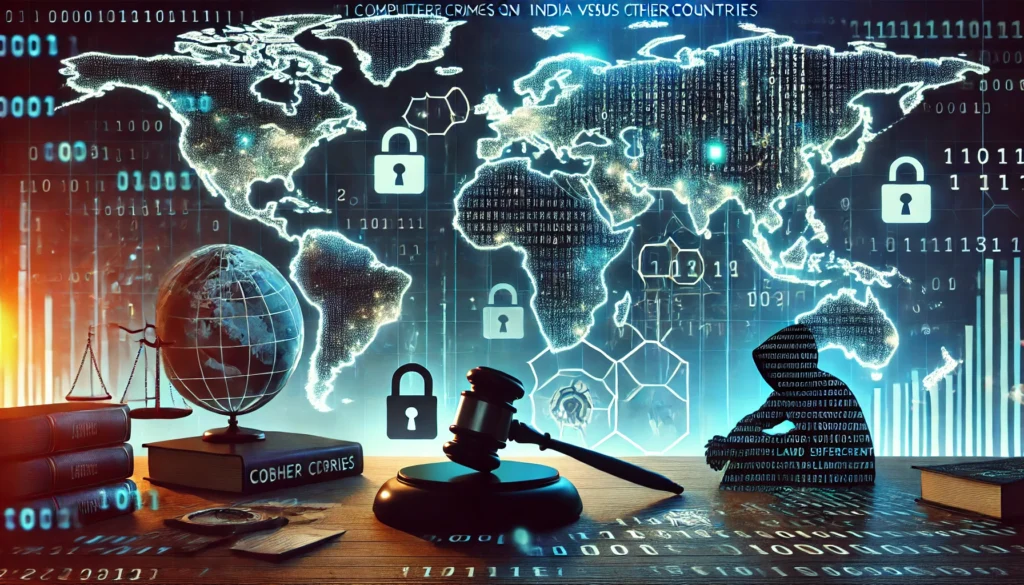Published on 13th August 2025
Authored By: Kiriti Kala
Amity University
Abstract
Cyberbullying is a rising concern in India’s digital society, with forms like trolling, doxing, impersonation, and revenge porn causing deep psychological and social harm. This article examines the legal landscape governing cyberbullying through the lens of the Information Technology Act, 2000, and the Bharatiya Nyaya Sanhita, 2023. It also highlights institutional responses such as the National Cyber Crime Reporting Portal and IT Rules, 2021. Despite these measures, significant gaps remain in legal clarity, enforcement, platform accountability, and victim support. The article calls for a dedicated cyberbullying law, stronger cyber policing, and public awareness to create a safer digital ecosystem.
Introduction
In today’s interconnected world, the internet is not just a source of information and entertainment—it is a space where we work, learn, socialize, and express ourselves. But alongside these opportunities comes a darker side: the growing menace of cyberbullying. Unlike traditional forms of harassment, cyberbullying reaches into the very heart of a person’s private life, often invading through smartphones, laptops, and social media platforms. It’s relentless, pervasive, and leaves a lasting impact, especially on vulnerable individuals.
Cyberbullying can take many shapes, each more damaging than the last. Trolling is one of the most common forms, where people post inflammatory or hurtful comments solely to provoke others. Then there’s doxing, which involves publicly leaking someone’s private information—like their phone number, address, or personal photos—without consent. In recent years, a particularly disturbing trend has been the rise of revenge porn, where intimate images or videos are shared without permission, often as a form of humiliation or control. Impersonation is another harmful tactic, involving fake accounts created to defame or harass someone. Other behaviours like cyberstalking, body shaming, and coordinated online attacks often follow a pattern of targeted abuse.
The individuals most affected by cyberbullying include teenagers, women, LGBTQ+ individuals, and public personalities. For students and adolescents, the digital space is an extension of their social world. Unfortunately, this means that peer pressure and online popularity contests can quickly turn into breeding grounds for bullying. Women frequently face sexualized abuse online ranging from unsolicited messages to threats of violence. LGBTQ+ individuals, activists, and influencers are also frequent targets of hate speech and trolling campaigns. Public figures, especially those who are outspoken or hold controversial views, face continuous scrutiny and targeted harassment.
The emotional and psychological impact of cyberbullying is profound. Victims often report feelings of anxiety, depression, low self-esteem, and helplessness. Some withdraw from social interactions, struggle academically or professionally, or even consider self-harm or suicide. What makes cyberbullying especially painful is its persistence—it follows victims wherever they go, often anonymously and without warning, making it harder to seek refuge or justice.
Legal Framework Dealing with Cyberbullying in India
In India, the legal system has taken steps to address various aspects of online abuse. However, cyberbullying as a standalone offence is yet to be clearly defined under Indian law. Despite this, several laws provide partial remedies. The Information Technology Act, 2000, includes important sections that deal with different aspects of cyber abuse. For example, Section 66C punishes identity theft, relevant in cases of online impersonation.1 Section 66D deals with cheating by impersonation through computer resources—often invoked when someone pretends to be another person to deceive others online.2
Sections 67, 67A, and 67B address the circulation of obscene or sexually explicit material and child pornography, particularly relevant in cases involving revenge porn or sextortion.3
Interestingly, Section 66A, which criminalized sending “offensive messages” electronically, was struck down by the Supreme Court in 2015 for being vague and unconstitutional.4 Despite this, there have been instances where it has been wrongly invoked by authorities, showing the urgent need for better awareness and legal clarity.
With the recent introduction of the Bharatiya Nyaya Sanhita (BNS) in 2023, several updated provisions replace sections of the older Indian Penal Code. Notably, Section 73 of the BNS criminalizes sexual harassment, covering online messages or comments that are sexually offensive.5 Section 74 pertains to stalking, including its digital form, where someone persistently contacts or monitors a person online.6 Section 354(2) addresses voyeurism and can be used in instances where private images or videos are shared without consent.7
Other relevant sections include 351, which protects women from vulgar gestures or comments;8 Section 356, which criminalizes threats to person or property, and its sub-clause 356(2), which specifically tackles anonymous threats.9 Section 354(3) covers the use of criminal force or coercion with intent to outrage a woman’s modesty—an increasingly relevant issue in online spaces where threats and abuse often intersect.10
While the legal framework offers some protection, addressing cyberbullying requires more than just criminal provisions. Institutions, schools, tech platforms, and the broader society all have vital roles to play. The Ministry of Home Affairs launched the National Cyber Crime Reporting Portal (cybercrime.gov.in),11 which allows victims to file complaints—especially those involving women and children—without having to visit a police station. This has made reporting somewhat easier, though follow-through remains inconsistent.
Role of Government and Institutions
Cybercrime units have also been set up at district and state levels. However, these units often struggle with a lack of trained staff and modern infrastructure. Many police officials are not adequately equipped to understand the technical nuances of online harassment, resulting in delayed or mishandled investigations. There’s a growing need for regular training and investment in cyber forensics and digital policing.
Meanwhile, the Ministry of Electronics and Information Technology has enforced new intermediary guidelines under the IT Rules of 2021.12 These rules require platforms like Facebook, Instagram, and X (formerly Twitter) to appoint grievance officers and act on complaints within a fixed timeframe. They also mandate the removal of harmful or illegal content upon receiving valid complaints. While these rules are a step in the right direction, enforcement remains inconsistent. Victims often report that platforms are slow to act, or worse, ignore serious complaints unless they attract public attention.
Education plays a crucial role in prevention. Recognizing this, the Central Board of Secondary Education (CBSE) and the National Council of Educational Research and Training (NCERT) have issued guidelines urging schools to promote cyber safety.13 These include awareness campaigns, student workshops, and the inclusion of cyber ethics in the curriculum. But implementation varies across schools, and many students remain unaware of how to protect themselves online.
Non-governmental organizations (NGOs) have also stepped in to fill the gaps. Groups like Cyber Peace Foundation and the Internet Freedom Foundation conduct awareness drives, offer legal assistance, and even train police and educators in understanding digital abuse.14 Their work is crucial in ensuring that cyberbullying doesn’t remain hidden or unaddressed.
Judicial Approach
The judiciary has played an influential role in shaping the conversation around online abuse, even in the absence of a dedicated anti-cyberbullying law. The Supreme Court’s decision in Shreya Singhal v. Union of India (2015), which struck down Section 66A of the IT Act, reaffirmed the importance of free speech.4
The case of K.S. Puttaswamy v. Union of India (2017) recognized privacy as a fundamental right, which has far-reaching implications for cases involving doxing, revenge porn, and non-consensual sharing of private content.15 Meanwhile, courts have also weighed in on the responsibilities of online platforms. In several cases, such as Facebook Inc. v. Union of India, the judiciary emphasized that intermediaries must act quickly in removing harmful content and assisting law enforcement when required.16
Gaps in the Current Legal Framework
Despite these efforts, the current legal framework in India has several notable gaps. The first and most glaring is the lack of a legal definition of cyberbullying. This forces victims to rely on a patchwork of laws that don’t fully reflect the unique nature of online harassment. It also makes it difficult for police and courts to treat such cases with the seriousness they deserve.
Furthermore, current laws tend to focus more on punishing the offender rather than supporting the victim. There are no formal provisions for psychological support, privacy protection, or rehabilitation—especially for minors, women, and marginalized individuals who often face the brunt of online abuse.
Enforcement is another weak link. Many victims report that police either do not take cyber complaints seriously or lack the technical expertise to investigate effectively. In some cases, victims are even discouraged from filing formal complaints, especially if the abuse is seen as “not serious enough.”
Another significant issue is underreporting. Many people—especially women and LGBTQ+ individuals—fear further harassment, privacy breaches, or being blamed for the abuse. Social stigma, lack of digital literacy, and intimidating legal processes make it harder for victims to seek help.
Moreover, social media platforms are often inconsistent in how they handle abuse reports. While they are required to remove harmful content under the IT Rules, in practice, they often act slowly or only when legally compelled to do so. This lack of accountability creates an environment where abusers feel emboldened.
Recommendations
To effectively address these issues, several reforms are urgently needed. First and foremost, India should enact a dedicated law against cyberbullying. This law should provide a clear definition of cyberbullying, outline its different forms, and offer graded penalties—especially for cases involving children, women, or marginalized groups.
The legal system also needs to be more victim focused. This means offering psychological counselling, anonymous reporting channels, fast-track courts for sensitive cases, and stronger privacy protections. Helplines and legal aid services should be made more widely available and accessible.
Cybercrime units must be strengthened across the country. Every district should have a trained, well-equipped cyber cell that can investigate complaints promptly and sensitively. Alongside this, schools and colleges should be mandated to teach digital literacy and cyber safety from an early age. Students should learn how to use the internet responsibly and how to report abuse when it happens.
Social media companies must be held more accountable. They should respond to user complaints quickly, remove harmful content proactively, and cooperate with investigations. Regular audits by regulatory bodies can ensure that these platforms adhere to their obligations.
Lastly, public awareness must become a national priority. Government agencies, educational institutions, influencers, and civil society must work together to create campaigns that highlight the seriousness of cyberbullying. When more people understand what cyberbullying is and how to deal with it, we move closer to creating a digital world that is safer for everyone.
Conclusion
Cyberbullying is not just a legal issue—it’s a societal one. While India has made strides in acknowledging and addressing digital abuse, much more needs to be done. A comprehensive and victim-centric approach—grounded in legal reform, education, institutional support, and digital accountability—is the only way forward. The goal is not merely to punish the offender but to create an online environment where every user, regardless of age, gender, or identity, feels safe, respected, and empowered.
References
- Information Technology Act, No. 21 of 2000, 66C, India Code (2000).
- § 66D.
- §§ 67, 67A, 67B.
- Shreya Singhal v. Union of India, (2015) 5 SCC 1 (India).
- Bharatiya Nyaya Sanhita, 2023, 73 (India).
- § 74.
- § 354(2).
- § 351.
- § 356(2).
- § 354(3).
- National Cyber Crime Reporting Portal, https://cybercrime.gov.in/.
- Information Technology (Intermediary Guidelines and Digital Media Ethics Code) Rules, 2021, G.S.R. 139(E) (Feb. 25, 2021) (India).
- CBSE Circular No. Acad-62/2020; NCERT Cyber Safety Handbook (2021).
- See https://cyberpeace.org/; https://internetfreedom.in/.
- S. Puttaswamy v. Union of India, (2017) 10 SCC 1 (India).
- Facebook Inc. v. Union of India, W.P. No. 20214 of 2018 (Madras HC).




